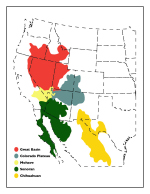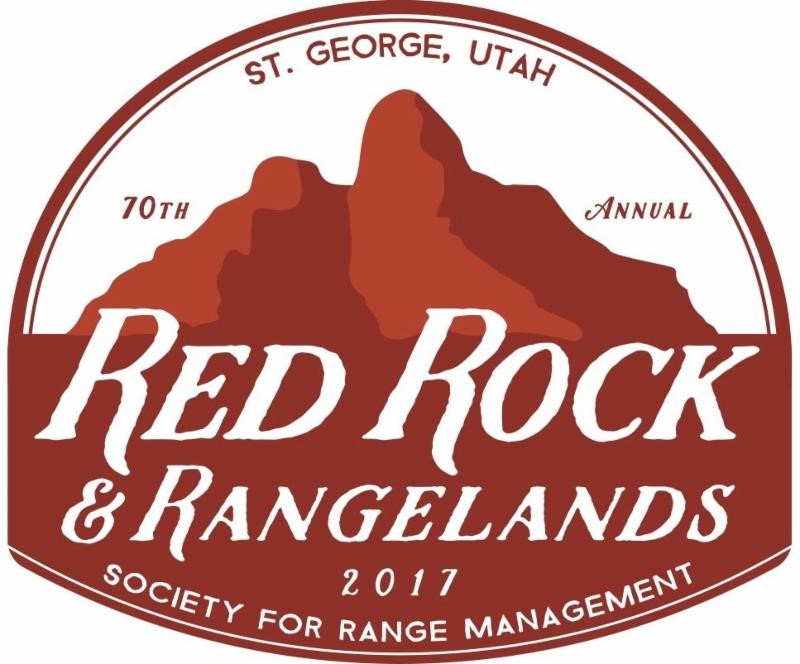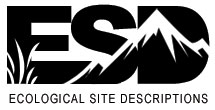 |
December 9-11, 2008 Reno, Nevada Grand Sierra Resort and Casino |
 |
American Deserts - Plenary Session
| Tuesday, December 9, 2008 | Meeting Room: Crystal Ballroom | Print Page | |
| Time | Topic | General Notes: Goal is Science Synthesis |
Speakers & Co-Authors |
| 6:30 - 8:00 | Breakfast Buffet | Hosted by Economists and Rural Sociologists | WERA 1005, W1192, WRDC |
| 8:00 - 8:15 | Welcome to Symposium/Workshop | Bud Cribley, BLM Deputy Assistant Director Renewable Resources & Planning; Purpose of the conference/workshop and expected outcomes/products (also Logistics, Agenda, Housekeeping Details) |
Bud Cribley, BLM Deputy Assistant Director Renewable Resources and Planning John Tanaka, SRM - Moderator for the Day |
| 8:15 - 8:30 | Importance of the Issue from a Public Land Management Perspective | C. Stephen Allred, Assistant Secretary for Land and Minerals Management, U.S. Dept. of the Interior | |
| 8:30 - 8:45 | Importance of the Issue from a Private Land Management Perspective | Jack Alexander, Synergy Resources Solutions Inc., (MT) Speaker Ken Zimmerman, Lone Tree Cattle Company, Bishop, California; Acting Chair, National Invasive Species Advisory Committee; Chair, Range Mgmt Advisory Committee, California State Board of Forestry Co-Author | |
| 8:45 - 9:30 | Keynote: The State of Invasive Plants & Altered Fire Regimes in American Deserts - A Call to Arms | An Overview of the five deserts (ecology, fire regimes, etc) and the threats that invasives and wildfires present to the natural and human resources in these ecosystems. | Julio Betancourt,USGS |
| 9:30 - 10:00 | Break | Refreshments provided | |
| 10:00 - 10:30 | Topic 1: Land Use and Plant Invasions in the American Deserts | Summarize the history of plant invasions focusing on an upland invader (cheatgrass) and a riparian invader (tamarisk) describing vectors, colonization, establishment, spread, and impact phases of invasion. | Dave Pyke, USGS |
| 10:30 - 11:00 | Topic 2: Invasive Plants that Alter Fire Regimes | Present information about the dominant invasive plant species that affect wildfire regimes in desert regions (centered on detailed examples of an herbaceous and a woody invader), describe the specific ways that they alter fire regimes and lead to an invasive plant/fire regime cycle, and explain what is necessary to break this cycle. | Matt Brooks, USGS Jeanne Chambers, USFS Co-Authors |
| 11:00 - 11:30 | Topic 3: Wildfires and Climate Change | Summarize the predictions for climate change across all deserts and how this will interact to alter the biology of invasive species and future fire regimes. | John Abotzglou, San Jose State |
| 11:30 - 1:00 PM | Lunch Provided Invited Speakers | Agency Under Secretaries and Hot and Cold Desert Governors
Address Attendees (15-20 minutes each) |
Dr. Gale Buchanan, USDA Under Secretary for Research, Education and Economics |
| 1:00 - 1:30 | Topic 4: Altered Ecosystem Processes: Biogeochemical Cycles, Soil Biology and Biogeochemistry | Synthesize current literature on how fire regimes altered by plant invasions affect soil: • physical • chemistry • biology |
Edith Allen, UC Riverside |
| 1:30 - 2:00 | Topic 5: Altered Ecosystem Processes: Watershed Processes and Hydrologic Events | Synthesize current literature on how fire regimes altered by plant invasions affect hydrologic events: • physical/hydrologic properties • chemistry • biology |
Fred Pierson, ARS, Cold Deserts Jeff Stone, ARS, Hot Deserts |
| 2:00 - 2:30 | Topic 6: Cascading Impacts on Biodiversity | Synthesize current literature on how fire regimes altered by plant invasions affect biodiversity in hot and cold desert regions. Address both single species (e.g. desert tortoise, sagebrush endemics) and multispecies (annual plant diversity, general wildlife habitat quality, etc.) | Todd Esque, USGS, Hot Deserts John Rotenberry, UC Riverside, Cold Deserts Co-Presenters |
| 2:30 - 3:00 | Topic 7: Economic and Social Impacts of Desert Fires and Invasives | Synthesize the economic and social impacts fire regimes altered by plant invasions. | Mark Brunson, Utah State University - Sociologist John Tanaka, Oregon State University - Economist Co-Authors |
| 3:00 - 3:30 | Break | Refreshments provided | |
| 3:30 - 4:00 | Topic 8: Approaches to Managing Altered Fire Regimes and Their Consequences | Synthesize the various land management approaches for preventing, or mitigating the effects of, fire regimes altered by plant invasions. This should include some mention of fuels management, fire suppression, and post-fire rehabilitation. | Jim Douglas, Assistant Director, Fire and Aviation Bureau of Land Management |
| 4:00 - 4:30 | Topic 9: With All of the Tools Available, Why Are Invasives and Wildfires Increasing? | Describe the limitations in technology, funding, knowledge and then discuss their effects on our efforts to reduce invasive plants that alter fire regimes. | Dick Mack, Washington State University |
| 4:30 - 5:00 | Summary and Synthesis | Brief Synopsis of Presentations and reiterating the Workshop tasks. | Kurt Pregitzer, UNR |
| 5:00 - 8:00 | Poster Session Cash Bar, Hot and Cold Appetizers | "OPEN to all ATTENDEES". All that register a poster can participate. Posters should focus on case histories of "on-the-ground management efforts that work - or don't work". Posters up from noon of day 1 to end of conference. | |







 Society for Range Management
Society for Range Management